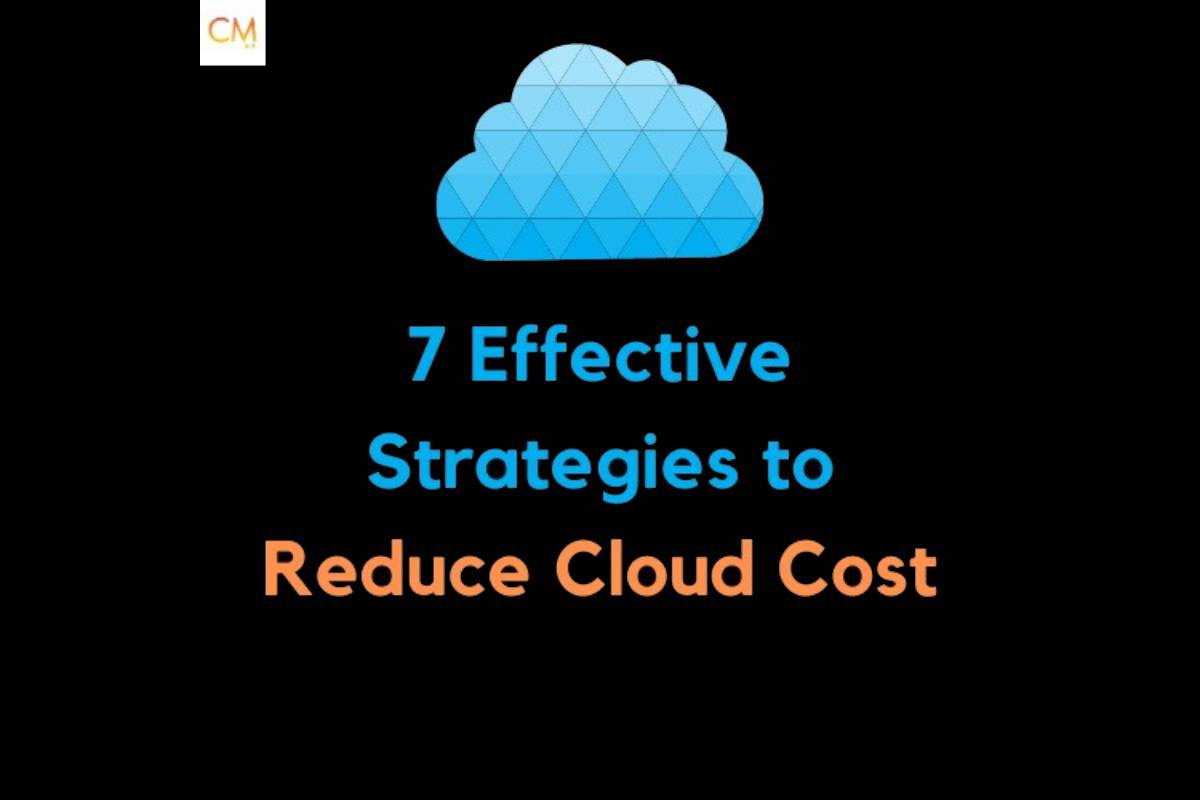

7 Insider Secrets to Slash Your Cloud Monthly Bills
Mastering Cloud Costs: A Practical Guide
Ever felt your cloud bill sneak up like a ninja during the night? Spend your teamwork and financial sense to stop the cost creep once and for all! Below you’ll find a quick playbook with proven tricks to keep your monthly expenses in check.
1. Watch Utilization and Trigger Smart Alerts
- Set up simple dashboards that show both usage and expenditure side‑by‑side.
- Tell your system to shout a warning whenever you cross a predefined budget line.
- Use a single alert for all services – keeps the noise to a minimum.
2. Get Wise With Compute Services
- Fill your compute engines with just enough capacity. Think carefully before adding another instance.
- Switch to auto‑scaling wherever possible – let the cloud handle spikes.
- Use spot instances for batch work; they’re cheaper, just don’t be surprised if they go away early.
3. Tag Everything, Pay Attention to Allocation
- Attach tags to every resource. Identify who owns it and what it’s for.
- Break the costs into fine‑grained buckets so the budget pays exactly where it should.
- Keep the tags consistent – naming conventions are cheaper than dealing with a messy bill.
4. Constrain the Infrastructure & Rethink Architecture
- Group related services into common clusters—less networking overhead and better control.
- Consider switching to server‑less or managed services where possible—no idle servers waiting in the queue.
- Upgrade or refactor older components that consume too much resources.
5. Jump on Server‑less Offerings
- Let functions run on demand instead of constantly on a server.
- Server‑less means you only pay for actual compute time, not raw allocation.
6. Tighten Storage Spending & Remove the Unused
- Identify and purge expired objects or backups that no longer serve any purpose.
- Pick tiered storage to hold data that’s rarely accessed—cheaper, yet still accessible.
- Automate cleanup with policies that run every few weeks.
7. Control the Data Transfer Bill
- Put data home where it’s usually needed—use regional storage to cut cross‑region traffic.
- Cache popular data closer to your customers.
- Limit data egress by employing content delivery networks.
Conclusion: The Road to Affordable Cloud
By implementing these steps, you’ll keep your cloud usage lean, your spend low, and your team happy. Keep your eyes on the dashboard, let your tags do the heavy lifting, and never forget the power of server‑less tools. Let’s go and save those dollars—one smart choice at a time!
1. Monitor Service Utilization and Cost Threshold Notifications:
Cloud Monitoring: Your Daily Dashboard of the Sky
Imagine your cloud like a busy airport of data, traffic, and money. Want to know who’s flying where and how much fuel they’re burning? That’s where monitoring tools swoop in, ready to give you the full scoop.
Why tune into your cloud’s chatter?
- Custom API calls – Think of them as secret doors that open to the exact rooms you’re curious about.
- Monitoring agents – Little workers that run around, collecting updates from every corner.
- Multi‑view dashboards – A panoramic window into your cloud’s health, layered over a user‑friendly interface.
- Metrics – The numbers that tell you how many requests are flying and when they’re peaking.
Cost notifications: The alarm clock for your budget
Set thresholds in your cloud spending, and let the system chime when things get too wild. Turn that alarm into a rapid response: imagine a Slack ping, a phone buzz, or even a WhatsApp message telling you “Hot‑spot detected!”
- Instant alerts – No more surprise invoices. Dodge those spikes in real time.
- Slack/WhatsApp alerts – Because you’re already on those platforms for your coffee chat.
- Mobile notifications – Get a quick rundown at your fingertips when you’re on the go.
Speedy fixes with daily cost checks
Who doesn’t love a daily report? By scanning costs service‑by‑service, you spot the offenders early. Once you find out which portion is over the money budget, you can instantly patch it. Think of it as a detective mission with a happy ending.
- Trend comparison – Spot the year‑on‑year jump.
- Instant remediation suggestions – Alerts come with what to do next.
- Prevent future surprises – Fine‑tune your usage strategy using the data you collect.
With these tools and tactics, your cloud is no longer a mystery. It’s a well‑tended garden, where every watering session is measured and every growth spurt is celebrated.
2. Use compute services wisely:
Choosing Your Cloud Instance Flavor: On‑Demand, Reserved, or Spot?
Think of Cloud Instances Like Pizza Slices
Each flavour comes with a unique topping (configuration) and different price tags.
- On‑Demand: Pay as you go, great for quick‑fire projects that need the server to pop up suddenly.
- Reserved: Lock in a steady rate when you know your workload is predictable—think of it as a subscription savings plan.
- Spot: Super cheap, but the server can be grabbed back by the cloud if the spot price climbs above your bid. Perfect for work that can pause or fail gracefully.
How to Pick the Right One
Read your workload’s “personality” test. Look at usage patterns, peak times, and downtime.
If you have a stable, steady workload, Reserved Instances will give you significant savings.
If your tasks can be interrupted at any moment (think batch jobs, data crunching on EMR), Spot Instances can slash costs by a lot.
Case in Point: EMR Cluster Workers
Statistical, fault‑tolerant workloads are perfect for spot instances. The cheapest savings, with the caveat that the job can be killed if the market price rises.
Bottom Line
Always analyze usage patterns. Match the flavour to it for a predictable, cost‑efficient compute service.
3. Implement Cost Tags and Allocation:
Tagging Your Cloud: The Secret Sauce for Smart Ops
Ever felt like your cloud bill is a mystery novel that never ends? Tags Manager is the detective you didn’t know you needed. By labeling each resource with project, department, environment, service, and application name, you turn chaotic cost reports into tidy, readable spreadsheets.
How It Works (No Tech Manual Required)
- Granular Visibility – See exactly where money’s going, segment by segment.
- Patch on Point – Upload OS updates to all resources that share the same tag.
- Mass Deploy – Run scripts across a whole fleet with a single click.
Why It Matters
Think of Tags Manager as a project manager for your cloud.
- Automation – Say goodbye to manual firefighting.
- Accurate Cost Allocation – Every dollar knows its home.
- Optimization Highlights – Spot inefficiencies before they blast your budget.
- Budget Enforcement – Enforce limits with a simple policy.
Bottom Line
With tags in place, you’ll fly past the 99% of cloud mismanagement headaches and become the commander of your digital empire. Tag, track, and triumph!
4). Infrastructure Consolidation and Re-architecture:
Keeping Your Cloud Costs Feed‑Friendly (and Fun!)
When you decide how many cloud servers to spin up, you’re basically budgeting for your company’s “sky‑high” ambitions. Over‑provisioning is like buying a luxury car for a bike‑packing trip – it just wastes money.
Why Smart Numbers Matter
- Every instance should match the actual workload it handles.
- Use Amazon ELB (or any load balancer) and auto‑scaling so resources grow or shrink with the traffic.
- Consolidate your apps onto a smaller set of instances; this helps you capture real usage patterns.
Listen to the Cloud’s Pulse
Deploy monitoring tools that chart historic data. They tell you when an instance is under‑utilized, so you can safely reduce its size or shut it down.
- CPU and memory dashboards help spot idle resources.
- Network traffic graphs can reveal over‑provisioned bandwidth.
HACKATHON Check‑in: Shut Down the Dev Loop
Got a bunch of User Acceptance Testing (UAT) or Development instances running round the clock? Turn them off at night if they’re not in use. It saves just enough bucks that you can finally treat yourself to a pizza.
Consistency Is Key, Not a Myth
Make it a habit to constantly monitor all those metrics. You’ll keep utilization optimal, costs low, and morale high.
5. Onboard Serverless architectures:
Serverless: Where the Cloud Does the Heavy Lifting
What it Means for You
- No Server Sweat – Write the code, let the platform
automatically scale up or down with traffic. - Deploy with a wink – No piles of servers to manage; the cloud handles the rest.
- Cost Savings That Make Your Wallet Smile – Pay only for what you actually use, ditching idle resources.
Think managing servers is a headache? Serverless flips that notion on its head. Focus on making cool features happen while the cloud quietly takes care of scaling and infrastructure. It’s like having an invisible support crew that keeps your app humming and your budget tight.
6. Optimize Storage Costs and Clean Up Unused Resources:
How to Keep Your Cloud Costs in Check (and Your Wallet Smiling)
Imagine your cloud environment as a bustling city. Every unused instance or idle snapshot is a sleepy building that still rakes in bills. The trick? Audit, eliminate, and enjoy savings.
Step 1: Spot the Dormant Buildings
- Unused instances – They’re just taking up space, not doing anything.
- Orphaned images & AMIs – Like those old family photos that nobody ever scrolls through.
- Freed‑up IPs – Cast that unused address back into circulation.
- Storage volumes & snapshots – Check if they’re still needed.
Step 2: Archive the Rarely‑Used Data
Think of infrequently accessed data as your grandma’s recipe books: they’re precious but not daily. Move them to an archival tier so costs stay low.
- Use tiered storage to align cost with access frequency.
- Set up object lifecycle policies that automatically shift data to cheaper classes.
Step 3: Match the Right Storage Class to Your Traffic Patterns
Choosing the wrong class is like buying a snow shovel for summer – it’s just a waste. Pick the right class based on how often you touch the data.
Pro Tip: Always calculate anticipated transfer rates before you slot data into a class. Too much movement can surprise your bill.
Why This Matters
Unchecked, those dormant resources creep into your invoice, making your cloud feel like a phantom tax collector. By staying on top of auditing, archiving, and class selection, you’ll keep the costs transparent and manageable.
So, give yourself a break and let the cloud do what it does best – just keep the budget happy!
7. Data Transfer Costs:
Keep Your Cloud Cash In Check: A Friendly Guide
Ever notice how data hopping between regions can eat up a chunk of your cloud bill? We’re not going to let that happen.
1⃣ Choose the Right Spot for Your Users
Think of the cloud like a global lounge. If your users live in Europe and you store data in Asia, you’re forcing it to travel the planet every time someone opens a page. That’s expensive. Instead, pick the region closest to your audience—your data stays local, your latency shrinks, and your budget stays happy.
Pro Tip:
- Use analytics to spot where your traffic comes from.
- Deploy a tiny replica in each major zone if you have high traffic.
- Don’t forget, a front‑end cache can feel like a local library for your data.
2⃣ Leverage Content Delivery Networks (CDNs)
CDNs are like the post‑alons of the internet. They copy your static goodies—images, JS, CSS—to servers around the world near your users. The result? Fewer long‑haul transfers, faster load times, and a cleaner bill.
How It Saves Money:
- Data stays near the end‑user, so you pay less for inter‑region traffic.
- High traffic sites get a performance boost—think less server fatigue.
- Less bandwidth usage = lower renewal cost.
3⃣ Guard Against Sneaky Security Loops
Security isn’t just about protection—it’s also a cost saver. Unchecked data leaks can silently inflate your cloud bill. Reacting after the fact is like finding an extra $50 in the fridge after saving for a vacation. Prevent that.
- Avoid over‑exposed buckets or overly permissive IAM roles.
- Turn on data loss prevention (DLP) tools.
- Regularly audit your logs; if something looks off, investigate ASAP.
Bottom line? By selecting the right region, using a CDN, and tightening security, you set up a virtuous circle: less data movement, faster performance, and a more manageable bill. Keep your cloud costs under control and your smile—just like your savings—will stay wide!
Conclusion:
Cutting Cloud Costs Without Cutting Your Grand Piano
Managing cloud spend is a bit like juggling flaming torches while walking a tight rope—exciting, but you gotta keep everything balanced, or the whole thing goes kaboom.
Step 1: Set Up a Super‑Smart Watchdog
- Monitoring policies are your alarm system. Think of them as the watchdog that claps loudly when usage spikes.
- Automate alerts so you get a text the moment your bill starts to climb in the dark.
- Program the watchdog to ignore “static” usage—like a decent sweater that’s been worn out—but flag anything that feels like a new load.
Step 2: Tag Your Resources Like a Hunter
- Tag everything—VMs, databases, and that mysterious weird load balancer you’ve been staring at. Tags act like hunt tags that let you group expenses.
- Use descriptive tags: env:prod, team:analytics, region:us-east-1. They make searching costs a breeze.
- With tags, you can walk into your cost dashboard and instantly spot the expensive culprits.
Step 3: Pick Storage That’s Cheap but Comfy
- For rarely‑accessed data, go to cold storage. It’s like a deep‑freeze archive—cheaper, but with slower access times.
- Use Nearline or Coldline if you’re in Google Cloud, or Glacier for AWS.
- Don’t overprovision. Only keep the tier that matches your real usage.
Step 4: Optimize Data Transfer Like a Road Trip Planner
- Keep data moving where it’s closest. If you’re processing in eu-west-2, avoid shipping data to us-east-1.
- Enable edge caching to cut transfers across continents.
- Invest in dedicated networking for high‑volume traffic.
Step 5: Embrace Serverless (If You’re Not Too Nervous)
- Run small workloads with AWS Lambda, Google Cloud Functions, or AWS Fargate. You pay only for execution time.
- Deploy event–driven microservices that scale automatically without hoarding idle compute.
- Think of it as “pay‑for‑what‑you‑use” pizza slices instead of a whole pizza for the whole family.
Step 6: Build a Governance Dream Team
- Assign a cloud architects list with regular reviews of provisioning.
- Have budget owners who get regular expense dashboards.
- Hold agile cost‑review meetings to keep teams aligned on where money is being spent.
Step 7: Keep the High Scales While Avoiding the Scale‑Down Panic
- Use auto‑scaling to grow and shrink units based on real demand.
- Set a maximum cap to prevent runaway scaling.
- Always monitor performance, not just cost—it’s the silver lining of the whole enterprise.
Follow these seven strategies, and you’ll keep your cloud spending under control while still reaping the benefits of mighty cloud scalability.
Author Information
Meet the Cloud Maestro
Amit Kumar is the Head of Engineering at Checkmate Global Technologies, the brains behind our cutting‑edge cloud solutions. With years of experience turning cloud dreams into reality, he’s the go‑to guy for all things cloud.
Why We’re the Team to Call
- All‑in‑one Cloud stack – from strategy to deployment, we’ve got every layer covered.
- Scalable expertise – whether it’s a startup or an enterprise, our engineers adapt to your growth.
- Hands‑on support – hands deep in code, making sure your cloud runs smoother than a buttered slide.
Get a Cloud Engineer in India
If you’re ready to take the reins of your entire cloud environment, our engineers are ready to dive in. We’ll manage the whole stack so you can focus on what really matters: growing your business.
Ready to Make It Happen?
- Connect now – drop us a line and let’s chat about your cloud goals.
- Email us – we’ll reply faster than a memcached ping.
- Call us – we promise not to use too many “lol”s.





![Ways IT Industry is Changing the World [2025] Ways IT Industry is Changing the World [2025]](https://www.computertechreviews.com/wp-content/uploads/2025/04/IT-Industry.jpg)

